Steps of terror

In 2011, a local hunting guide happened upon a tyrannosaur footprint in the Canadian wilderness.
Excavating tracks
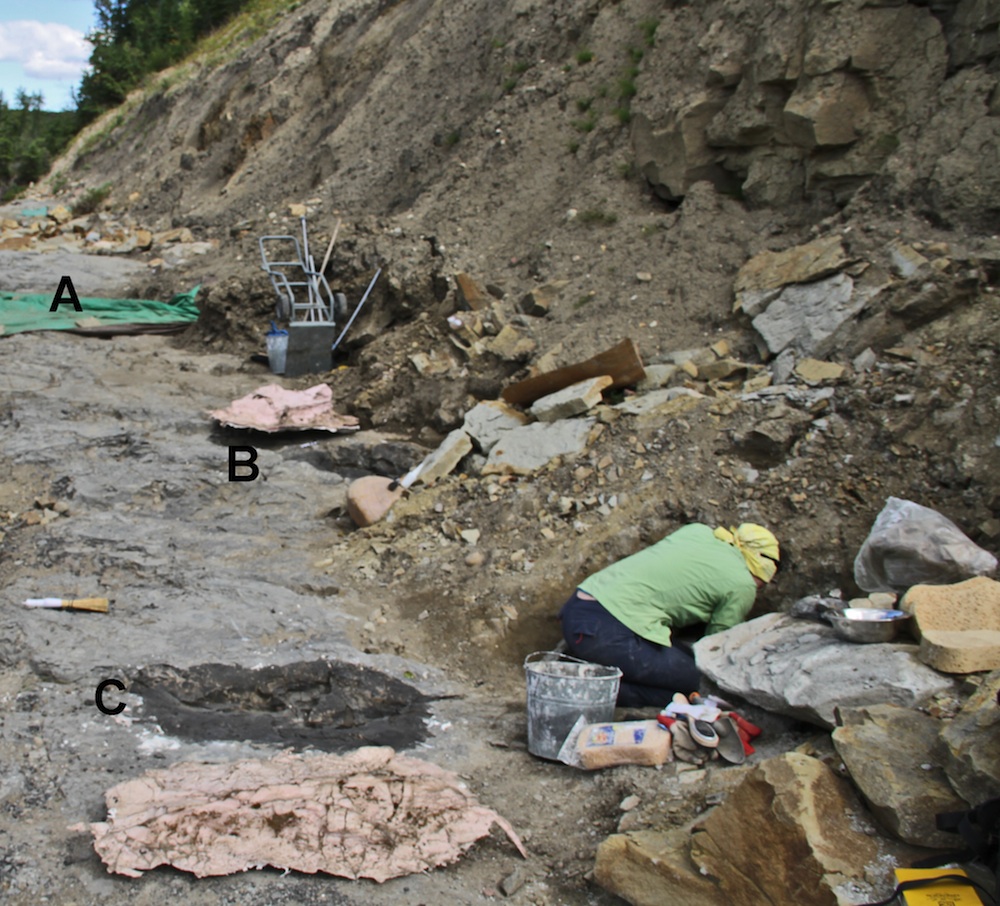
When researchers began excavating, they found a long, skinny stretch filled with dinosaur tracks of several types, including several more tyrannosaur tracks.
Molding the feet

Researchers created moldings of the footprints to study them in more detail.
Pack animals?

The three sets of tyrannosaur tracks were parallel to one another and all the same depth, suggesting the fierce predators moved together.
Pack animals?
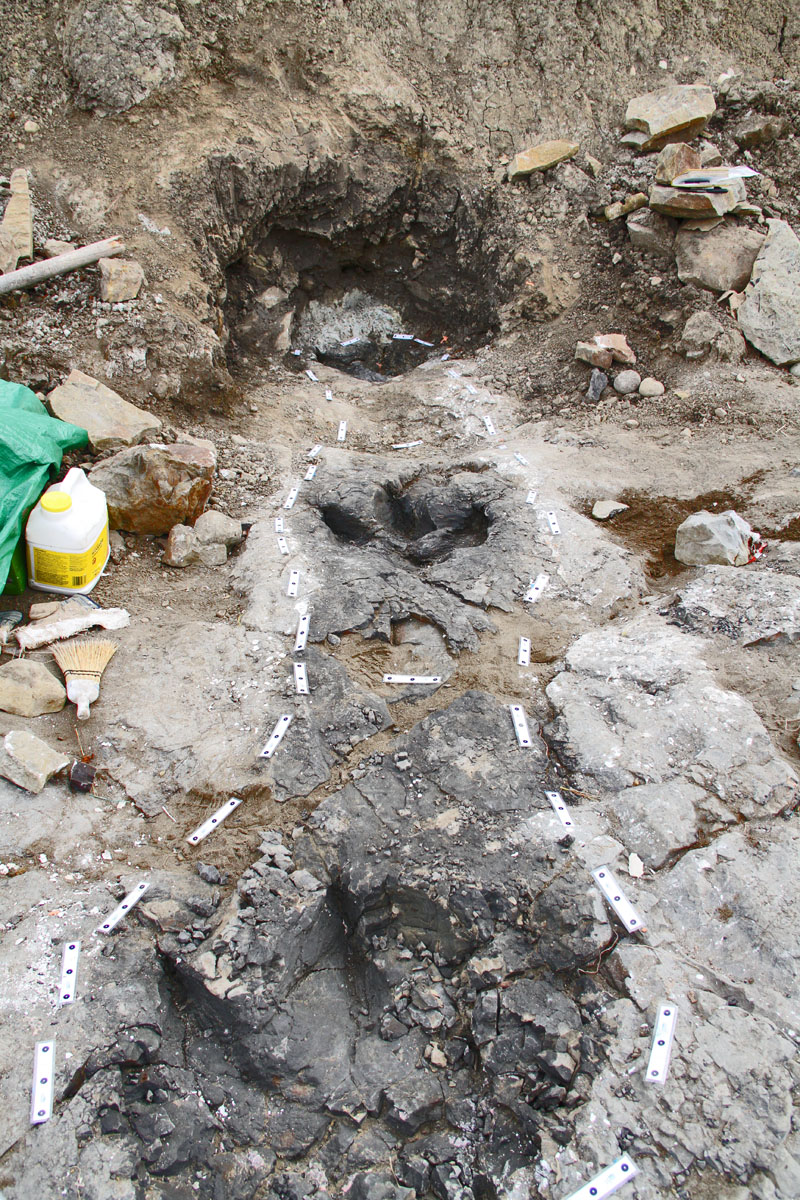
The tracks strengthen the theory that tyrannosaurs were pack animals.
Theropod track
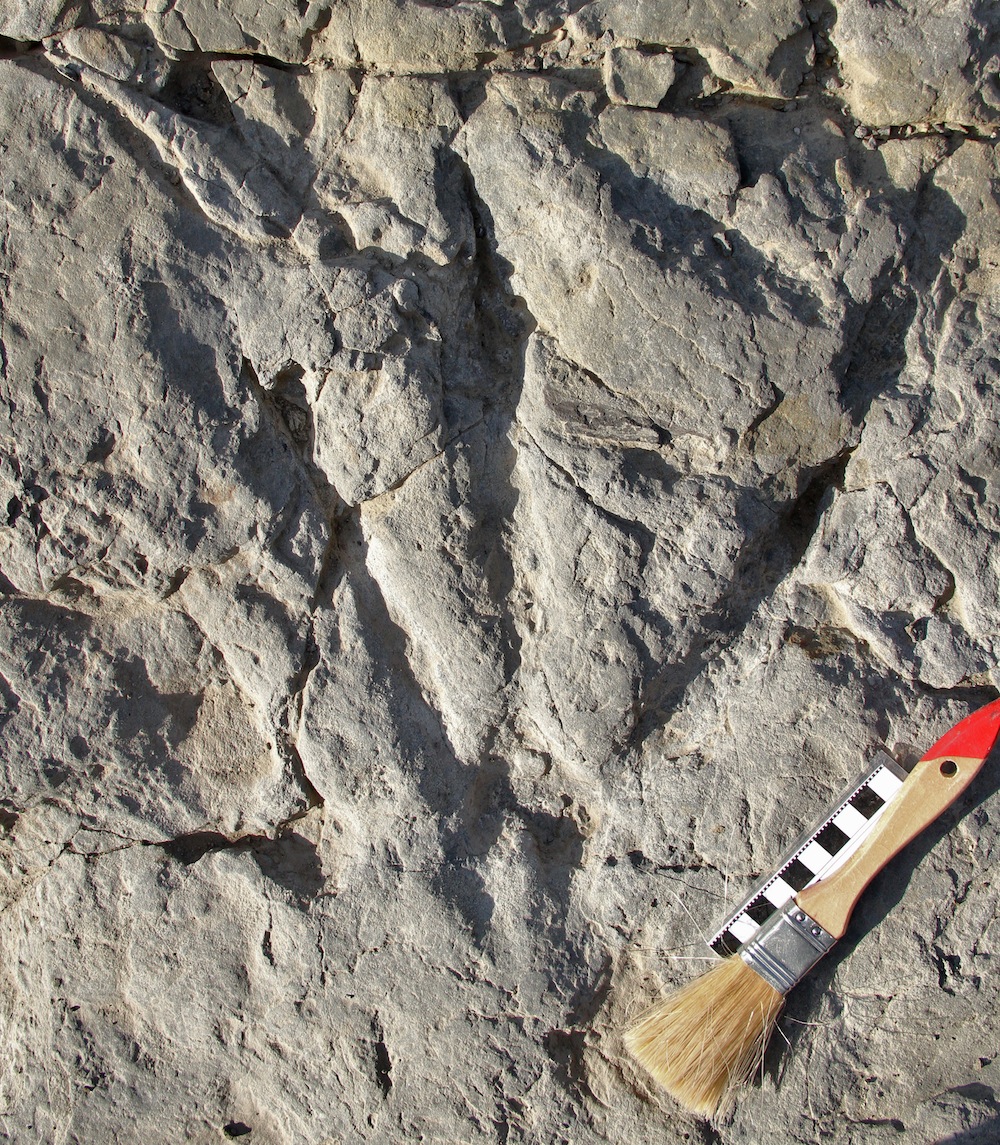
Tyrannosaurs weren't the only animals to have left their mark. Smaller theropods also left prints in the area.
Hadrosaur print
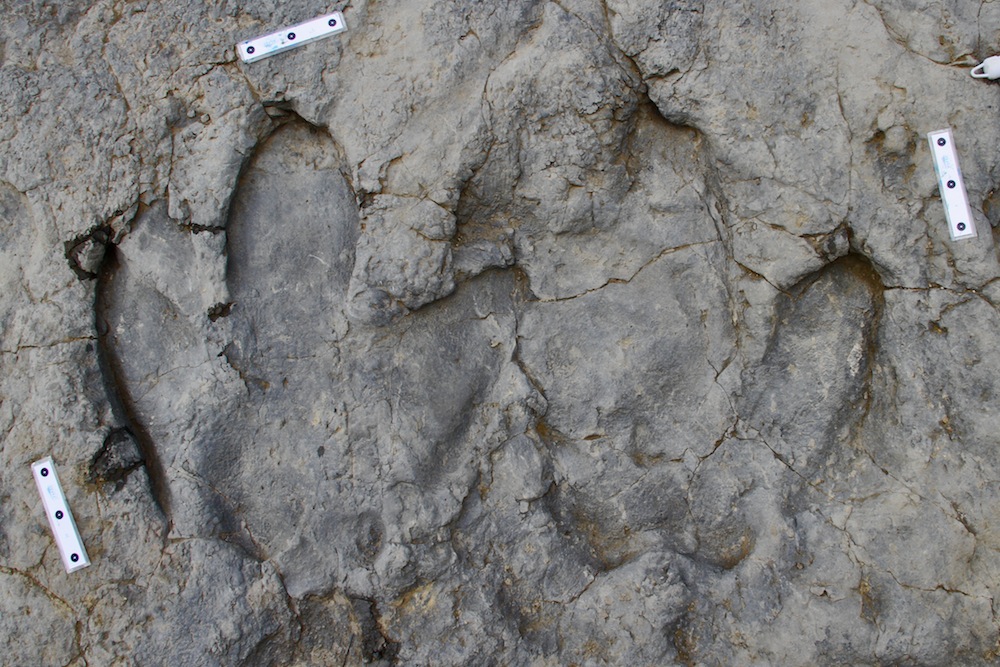
The tyrannosaurs narrowly missed their prey, as revealed by a track made by a hadrosaur that came through after the tyrannosaurs.
Get the world’s most fascinating discoveries delivered straight to your inbox.
Hadrosaur skin
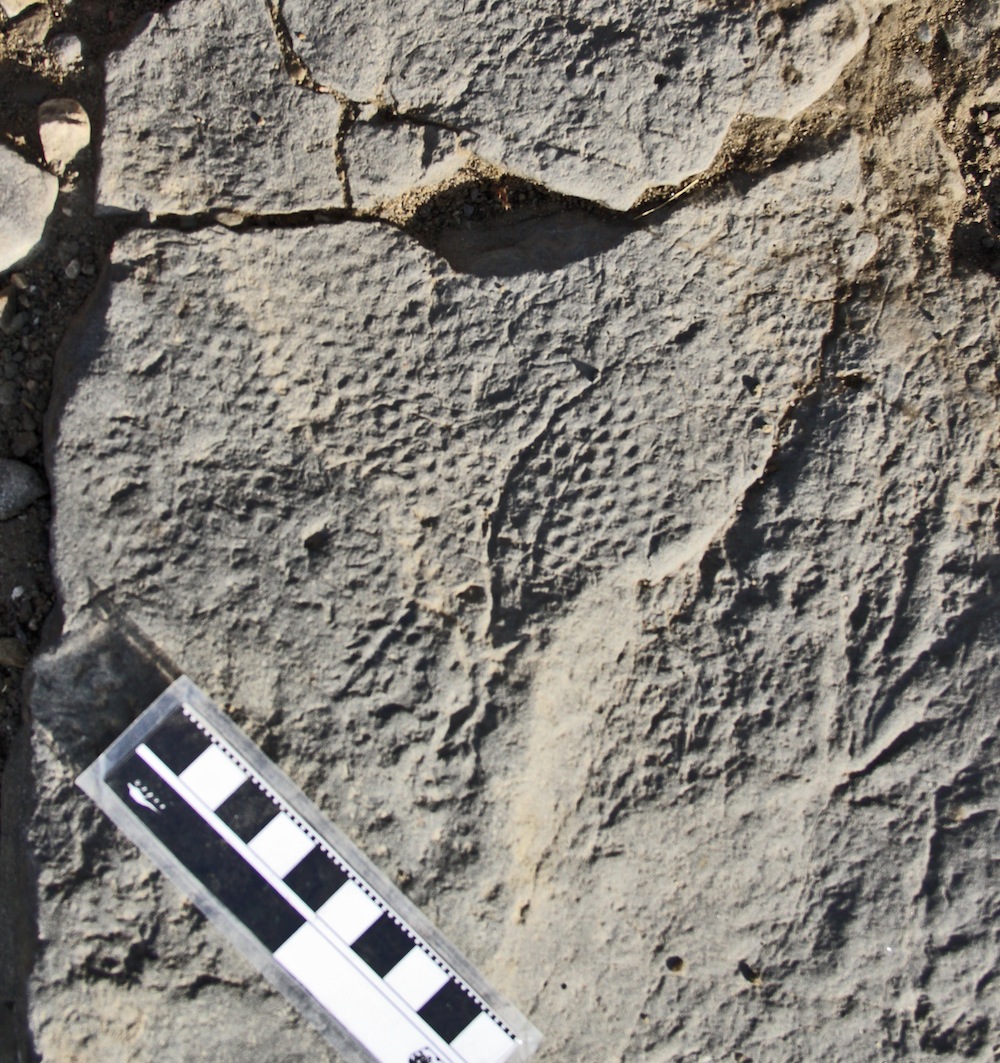
The hadrosaur also left a skin imprint in one of its tracks.
Recreating the walk
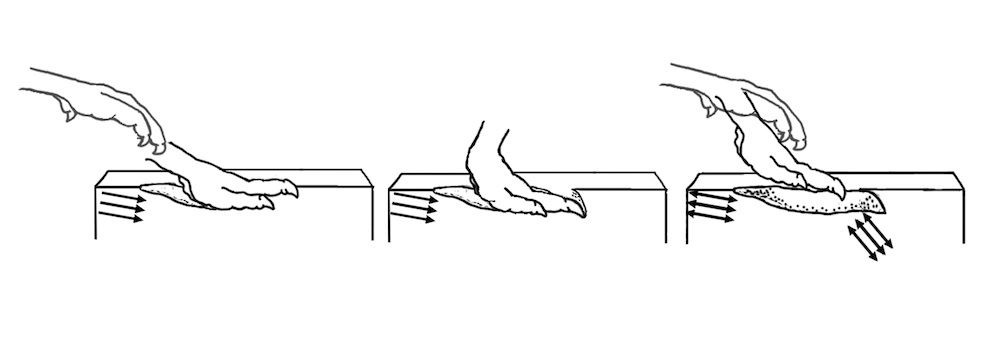
The footprints allowed researchers to recreate the tyrannosaurs' walk.
Walk on

The tyrannosaur tracks were all created at the same time, suggesting the terrifying trio may have stalked prey together.

Tia is the editor-in-chief (premium) and was formerly managing editor and senior writer for Live Science. Her work has appeared in Scientific American, Wired.com, Science News and other outlets. She holds a master's degree in bioengineering from the University of Washington, a graduate certificate in science writing from UC Santa Cruz and a bachelor's degree in mechanical engineering from the University of Texas at Austin. Tia was part of a team at the Milwaukee Journal Sentinel that published the Empty Cradles series on preterm births, which won multiple awards, including the 2012 Casey Medal for Meritorious Journalism.


